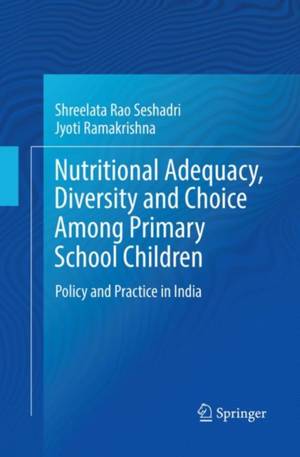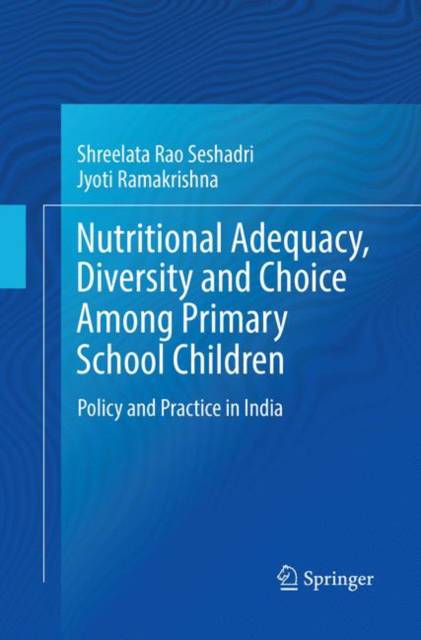
- Retrait gratuit dans votre magasin Club
- 7.000.000 titres dans notre catalogue
- Payer en toute sécurité
- Toujours un magasin près de chez vous
- Retrait gratuit dans votre magasin Club
- 7.000.000 titres dans notre catalogue
- Payer en toute sécurité
- Toujours un magasin près de chez vous
Nutritional Adequacy, Diversity and Choice Among Primary School Children
Policy and Practice in India
Shreelata Rao Seshadri, Jyoti Ramakrishna
148,95 €
+ 297 points
Format
Description
This book highlights the reality of malnutrition among school-age children in India and relates it with dietary adequacy, diversity and choice. Using empirical data from field research conducted in Karnataka, India, it documents the nutritional status of school-going children, and examines the socio-economic determinants. It provides insights into changing dietary patterns by analysing case studies from households and schools; and documents the impact of changing dietary choices on the daily nutritional intake of young children. As the issue of nutrition for school-age children is one that is largely neglected in the literature, the book fills an important gap.
The book also investigates the policy framework for addressing the nutritional needs of school-going children, and assesses the available government-sponsored interventions in terms of their efficiency and effectiveness, measured by their impact on the nutritional indices of the target group. It offers concrete recommendations for changing the nutritional intake of school-going children. Navigating through the socio-cultural causes for changing food choice and their impact on children's nutritional outcomes, this book shows a viable path to addressing malnutrition, taking into account both macro-level policy constraints and the micro-level perspectives of families, schools and communities.Spécifications
Parties prenantes
- Auteur(s) :
- Editeur:
Contenu
- Nombre de pages :
- 170
- Langue:
- Anglais
- Collection :
Caractéristiques
- EAN:
- 9789811098819
- Date de parution :
- 23-05-18
- Format:
- Livre broché
- Format numérique:
- Trade paperback (VS)
- Dimensions :
- 162 mm x 234 mm
- Poids :
- 399 g







